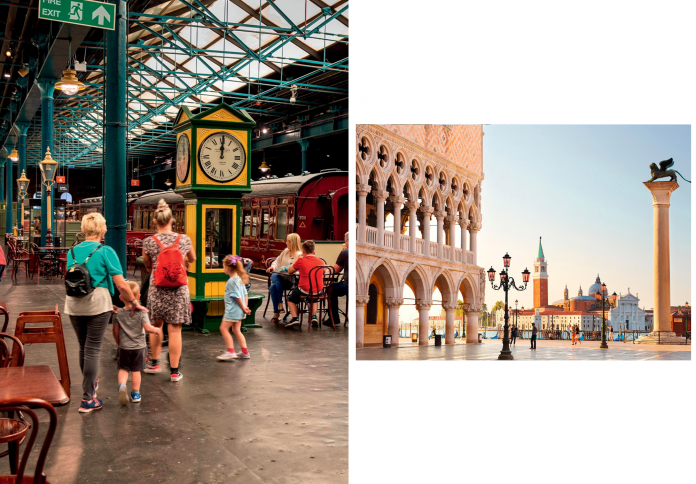The world, once again, is open for exploration, yet the return to the skies and seas has been greeted by a sobering reality: travel has never been more expensive. Across airlines, hotels, and ground services, prices have soared far beyond pre-pandemic levels, leading many to question if the era of accessible global exploration is over. National Geographic experts and industry analysts point to a perfect storm of economic and logistical factors driving this persistent inflation. This perfect storm is fueled by a relentless, pent-up demand surge clashing head-on with severe supply-side constraints—from crippling labor shortages and soaring fuel prices to necessary, but costly, infrastructure updates. For the traveler, this means the price of wanderlust has increased, reflecting a fundamental shift in how the industry operates and the true cost of moving people around a complex, recovering planet.
The Vengeance of Demand vs. The Scarcity of Supply
The single most powerful force keeping travel costs prohibitively high is the dramatic imbalance between demand and supply following global shutdowns. Experts consistently point to the phenomenon of “revenge travel”—the collective urge to make up for years of lost experiences.

This demand surge has been relentless, fueled by accumulated savings and a profound psychological need to connect and explore. Airlines and hotels, already operating with reduced capacity, were simply overwhelmed. This massive influx of willing travelers has allowed the industry to utilize dynamic pricing models to the maximum extent. Historically, price hikes were designed to curb demand; today, they merely reflect how much people are willing to pay. However, the industry has struggled to match this demand, as many airlines retired older, less efficient aircraft during the crisis, and labor across the entire hospitality sector has not returned to necessary levels, creating bottlenecks and limiting the number of available flights and rooms.
The Staggering Cost of Input and Labor
Beyond the supply-and-demand curve, the operational costs for airlines and hotels—known as input costs—have risen sharply, a factor directly translating into higher consumer prices. Inflation is not merely an inconvenience; it is a fundamental driver of travel expense.

The primary culprit is fuel. Jet fuel and bunker fuel prices remain highly volatile due to global geopolitical instability, representing one of the largest operating expenses for airlines and cruise lines. When fuel costs rise, the consumer immediately sees it reflected in higher ticket prices and added surcharges. Simultaneously, the travel and hospitality sector has been decimated by labor shortages. Hotels, restaurants, airport security, baggage handlers, and pilots are all demanding—and receiving—higher wages to return to a high-stress industry. These increased labor costs, necessary for maintaining quality and service, are passed directly onto the traveler, marking a permanent step-up in the baseline price of accommodation and transport.
Capacity Constraints and Fleet Optimization
The infrastructure of global travel is still operating under significant constraints, a subtle yet persistent factor in elevated pricing. Reduced capacity, whether in the air or on the ground, limits competition and reduces the availability of cheaper fares.

During the pandemic, airlines streamlined their operations, retiring older aircraft and optimizing fleets for efficiency. While financially sound for the carriers, this means fewer planes are in the sky overall, translating to fewer route options and fewer seats to absorb the demand. Furthermore, the return of international travel has exposed bottlenecks in airport infrastructure and air traffic control, sometimes requiring reduced flight schedules to prevent widespread delays and cancellations. For cruise lines, the process of bringing massive ships out of mothballs, rehiring specialized crew, and navigating new global regulations adds operational complexity and cost. These capacity constraints fundamentally restrict the return of high-volume, low-cost options.
The Invisible Price Tag: Sustainability and Regulation
A lesser-discussed, yet increasingly important, factor driving up travel costs is the necessary, but expensive, global push toward sustainability and increased regulation. These new costs, often invisible to the consumer, are factored into every ticket and booking.

Many nations are now implementing new environmental taxes, or tourism surcharges, often tied to carbon emissions or destination conservation efforts. These fees are designed to mitigate the environmental impact of travel on fragile ecosystems. For airlines, the future mandate to shift towards Sustainable Aviation Fuel (SAF), which is currently significantly more expensive than conventional jet fuel, means long-term costs will remain elevated. Additionally, post-crisis regulatory hurdles, including enhanced sanitation protocols, increased security staffing, and infrastructure improvements, add permanent overhead that the industry must recoup through consumer pricing. Travel is becoming more expensive because, for better or worse, the true environmental and social cost is finally being integrated into the price.
The Future of Travel: Prioritizing Experience over Volume
While the current economic climate is painful for travelers seeking budget options, experts suggest the current pricing model is leading the industry toward a long-term shift: prioritizing experience and quality over sheer volume.
The high cost of travel is forcing the industry to focus on premium offerings and unique experiential packages, catering to consumers willing to pay a high price for a memorable journey. For travelers, this means being more strategic: prioritizing off-peak seasons, seeking secondary destinations, and utilizing tools like flexible dates and price alerts. Ultimately, the cost of travel reflects the market’s determination to make up for lost time and increased operational burdens. As long as the relentless desire to explore the world remains, the traveler must adapt to a new normal where the price of that freedom is significantly higher.










